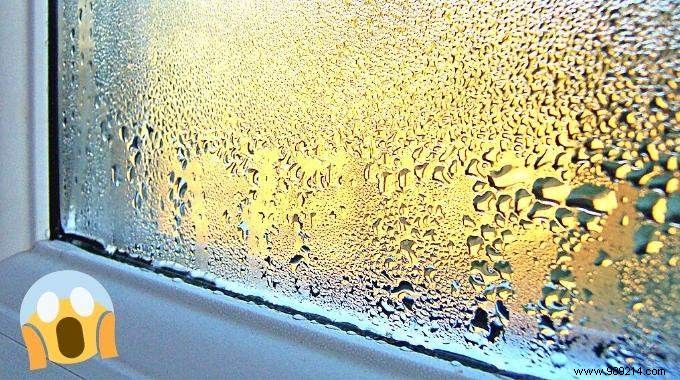
Today I show you how to never have condensation again on your windows.
Because this fog stuck on the windows is not only annoying.
It testifies especially to a place full of humidity. And that is neither good for the house nor for your health!
It causes wooden frames to rot, causes mold to appear, and even causes respiratory problems.
So what to do? Fortunately, there are tried and tested tricks to stop having water droplets on the windows.
In any case, since I've been using them, I no longer have any condensation on my windows.
The air around me is much healthier.
Discover 17 tips to say goodbye to condensation on windows. Watch:
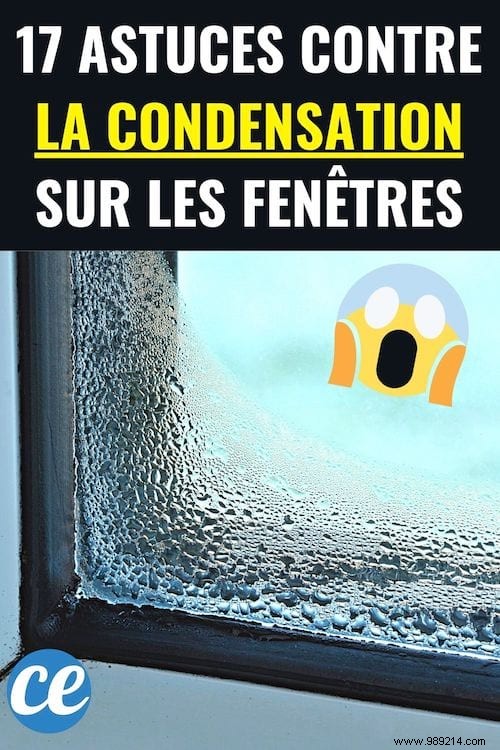
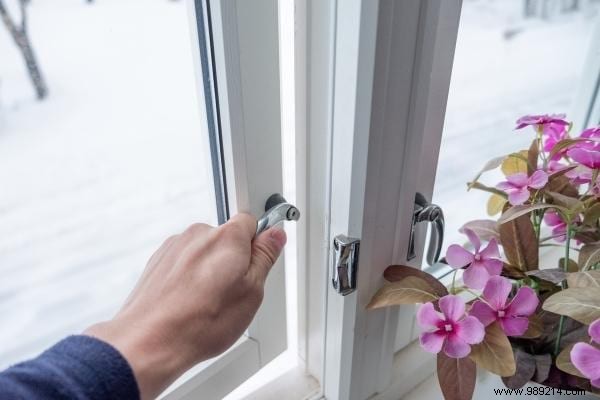
Opening the windows is the easiest and most effective way to get rid of condensation.
This way, warm and humid air is no longer blocked in the house.
Even in winter, we advise you to open them twice a day for at least 10 minutes.
The goal here is to create a large current of air.
Because the windows slightly open, it does not help much.
The air does not circulate enough!
To properly ventilate and remove condensation on windows, you must:
- open all windows wide and at the same time.
- open all doors, especially those in the bathroom and kitchen.
- turn off the heating so as not to waste energy.
Also remember to make this draft as soon as you take a shower or cook.
And you know the best?
You save on heating by doing this! How is that possible?
Damp air takes longer to warm up than dry air.
So after eliminating the condensation in the house, the heating is much more efficient.

When you cook and your dishes are not covered, steam comes out of the pan.
This inevitably creates condensation, especially if you boil water.
To avoid this, cover your pans with a lid.
Already it allows you to boil water faster.
But above all you contain the steam which no longer escapes everywhere.
Also turn on the extractor hood and let it run for 15 minutes after you finish.
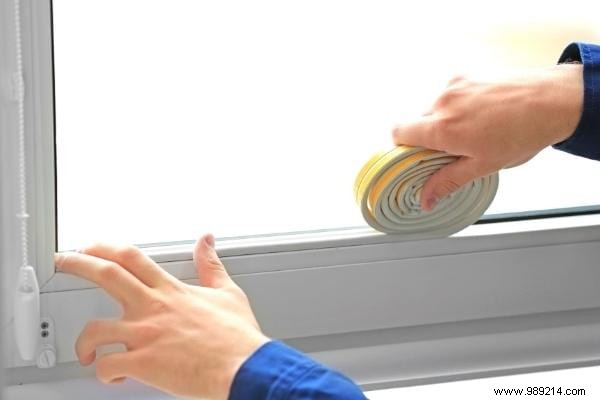
Caulk around windows and doors to prevent hot air from leaving your home!
Especially when your installations are aging.
Use sealing strips for this. They are extremely effective.
Cold air no longer passes through hinges or door or window frames.
Condensation is therefore reduced since your home interior is better insulated.
Not only are you less bothered by this condensation, but you also save on heating.
These sealing strips are also valuable if you are equipped with storm windows.
This way, the humid outside air does not enter the space between the windows.
Finally, remember to check that there are no small crevices around the windows and doors.
If so, apply some putty to seal the hole.
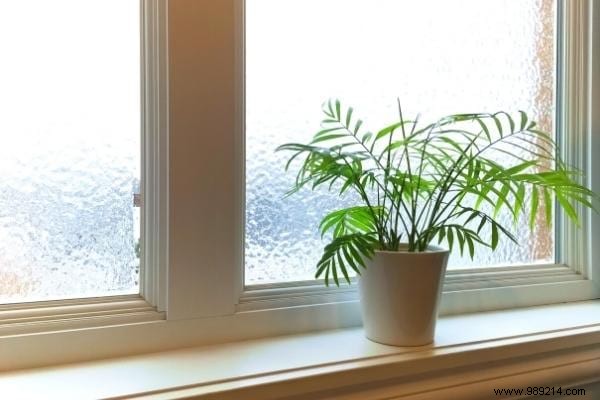
It will certainly amaze you, but do not keep plants near windows.
Indeed, they release moisture into the air, especially when you have several of them.
So keep them away, because it's a real condensation factor.
Conversely, be aware that some plants capture moisture to feed themselves.
I'm talking for example about tillandsias, spatiphyllum or Boston ferns.
These plants decorate your interior while absorbing humidity from the ambient air.
So don't hesitate to combine business with pleasure!

Do not air dry your clothes inside the house.
Why?
Because drying damp clothes considerably increases the humidity.
So if you have a balcony or a small garden, we strongly advise you to dry your clothes there.
If you have no choice and it's raining outside, remember to ventilate your interior well 3 to 4 times a day.
And follow these few tips to dry clothes much faster.

To effectively combat condensation, air must be allowed to circulate near the windows.
This is all the more important at night or during winter and autumn when temperatures drop sharply.
So do not close the curtains so that the air circulates well.
And it's the same for all the other types of covering (roller shutter, Velux...).
I am also thinking of mosquito nets or interior blinds. Do not leave them in place.

If you think there is too much humidity in a room of the house, put on a humidity absorber.
This type of device eliminates excess humidity in the air.
Just place it in the room and you don't have to do anything else.
After a few hours, the device begins to fill with water.
Just change the refill when empty.
You can put one in every room of the house.
It is particularly effective in the bathroom, kitchen or closet.
In addition, they also protect clothes from moisture.

Some rooms in the house are much more humid than others.
This is particularly the case in the bathroom when you wash, or in the kitchen when you cook.
It is therefore very important to turn on your CMV (controlled mechanical ventilation).
If it does not turn on automatically, you absolutely must turn it on.
The humidity that has difficulty escaping from this type of room is then expelled better.
You must run the VMC 15 to 20 minutes after taking a shower or cooking.
And to know if your VMC works well, do the following little test.
Place a sheet of toilet paper in front of the air vent.
If the sheet sticks to the grid, the airflow is correctly set.
Good on the other hand, everyone is not equipped with a CMV at home.
If this is your case, don't panic.
Just equip yourself with an air extractor. It's cheaper and easy to install.
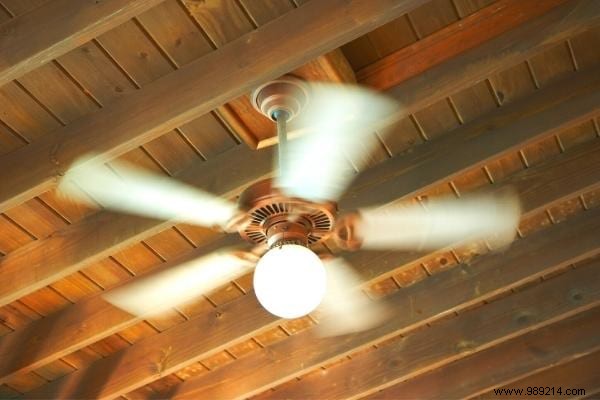
Circulating air makes it easy to reduce condensation on windows.
I will definitely amaze you.
But if you have a ceiling fan, turn it on, even during the winter.
Instead, rotate it counter-clockwise.
This way, you push the warm air from the ceiling to the floor, which reduces or even eliminates the condensation.

When you take out a very cold drink in the summer, it immediately becomes wet.
This phenomenon occurs when warm air hits a cold surface.
It's exactly the same for windows.
The idea is therefore to increase the temperature of the glazing to avoid producing this condensation.
To achieve this, you can slightly increase the temperature of the house.
Of course, do this in moderation so as not to consume too much.
Above all, you have the option of installing warm-edge glazing (known as Warm-edge technology).
I'll explain.
Conventional glazing is very often equipped with metal.
And metal is a conductive material that forms a thermal bridge.
This means that the cold coming from outside penetrates inside your house.
The warm-edge glazing avoids this phenomenon, as it is made of plastic material.
The inner wall is therefore less cold.
It can even increase the temperature of window edges by up to 6 degrees.
So when installing new windows, remember to equip them with this technology.

If you have old windows, installing storm windows can also reduce condensation.
The principle is as follows.
Usually made of wood or metal, storm windows can be installed inside or outside the main windows.
Thanks to this system, the accommodation is better insulated since you have an extra layer of glazing.
They therefore reduce your heating bills in winter.
It's a bit like the principle of double glazing, but without investing in the installation of new windows.

If there is a lot of humidity in your home, this is the device for you!
Some need to be turned on and off.
Others turn on automatically when the humidity level reaches a certain level.
Regardless of the version, dehumidifiers are effective for all rooms in the house.
You can buy one commercially or make one yourself with this trick.
It's just as effective and above all it's cheaper.
For best results, place the unit near windows where you tend to see the most condensation.

To prevent condensation from sticking to the windows, you can use dishwashing liquid.
Pour a few drops on a cloth and wipe the windows in small circular motions.
Wipe with a dry cloth so as not to leave streaks.
This method allows water drops and fog not to cling.
Another method is also possible, this time for exterior windows.
Many rain repellent products are sold for car windshields.
And you should know that these products can also help reduce condensation on windows.
By applying them to the glass, you prevent condensation from setting in.
Water scatters and runs out of the window.
Be careful though.
These tricks prevent condensation from setting in.
However, they do not solve the underlying problem.
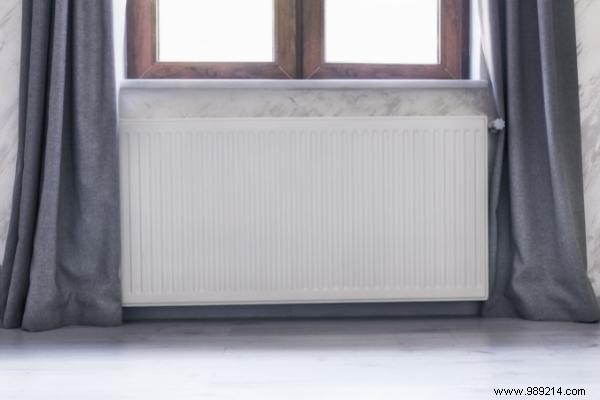
In the event of construction or renovation of the house, remember to place your radiators correctly.
And in your opinion, where should they be placed to avoid condensation on the windows?
The best location is under the window or at least close .
The hot air emitted by the radiator warms the windows, removes the fog from the bottom and therefore the condensation.
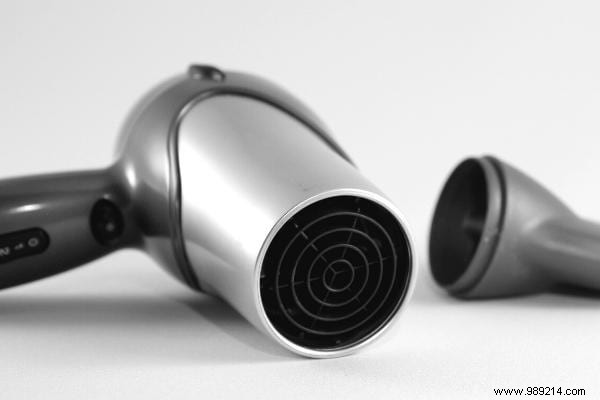
When you see fog on the windows, the first instinct is to wipe it off with your hand or a towel.
Well, don't do that anymore! Why?
Because it already leaves traces. But mostly it's inefficient.
Indeed, the condensation reappears as long as the glass remains cold!
To avoid this, you can use a hair dryer.
Put it about 20 cm from the glass and turn it on.
It's much more effective, especially on the bathroom window.

You know by now, it is humidity that causes condensation in a house.
Yes, but here it is, how do you know if this humidity level is really problematic or not?
Well, equip yourself with a hygrometer.
It gives the humidity level of the air, which makes it possible to act effectively when there is too much.
What is the ideal humidity level in a house?
The objective is to keep a humidity level between 40 and 60% in all rooms of the house.
To keep the air healthy, I placed a hygrometer in my room, but also in the bathroom.
This helps prevent mold from growing.
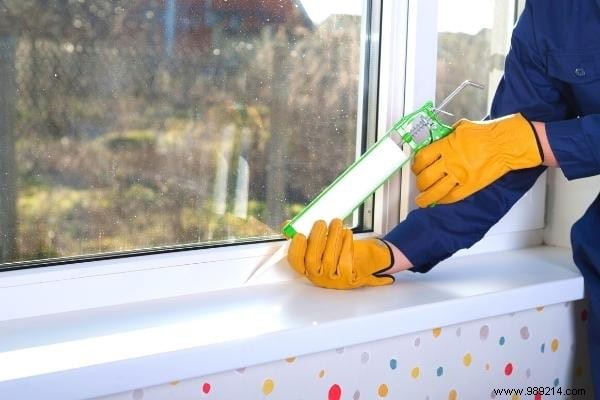
Sometimes the condensation can also come from an old window seal.
Tiny cracks may appear around doors and windows.
When the seal no longer does its job, air enters your home and cools your windows.
To restore the situation, apply a new sealant using a gun.
It's easy, fast and efficient!

In winter, when the heating is on, it sometimes creates dry air.
You often feel this in the bedrooms.
We wake up in the morning with a stuffy nose and a headache.
A humidifier is then used to humidify the air in the room.
The problem, is that this type of device can quickly install condensation.
This is particularly the case when the device is pushed all the way and the air circulates poorly in the room.
If you have this kind of problem, lower the operating volume or turn it off.
On the other hand, you are going to tell me that it does not solve the problem of dry air in your home.
Well, try these tricks (without a humidifier) to fix this problem for good.
Windows are generally the first areas affected by condensation.
They are in fact in direct contact with the cold outside.
There are several types of condensation.
Interior, exterior and between the windows.
What are the differences?
Well, condensation on interior windows is caused by excessive humidity in the house.
It often occurs in winter when warm air from a room hits cold windows.
Small drops of water then appear on the glass; it's the famous mist.
It is certainly the most common type of condensation.
Condensation on exterior windows is due to its dew point.
This is when the moisture in the air changes from a gaseous state to a liquid state.
We then see droplets that attach themselves to the exterior glazing.
Finally, condensation between the panes occurs when the gasket is expanded or cracked.
First and simply, for the window to fulfill its main function.
That is to say that we can see outside! It's still important, isn't it?
Second, it allows as much sun as possible to enter the house.
Especially in winter, the slightest ray can warm the interior of the house, and our morals!
Last but not least, condensation creates damage inside the house.
It causes mold, fungus and even corrosion to appear.
Remember that windows are the tip of the iceberg.
If condensation appears on it, it is because other less visible places are also affected.
The roof, the pipes, the exterior walls... All of this can deteriorate very quickly.
It is therefore a problem that must be resolved quickly.
And then, condensation can also cause health problems.
Too high ambient humidity develops bacteria, viruses, asthma, etc.
So take the lead and make sure it disappears!
There you go, now you know what causes condensation and how to get rid of it :-)
Easy, useful and efficient, isn't it?
In addition, it works on all materials (PVC, aluminium, etc.), whether the windows are new or older.
These solutions are obviously applicable in house or apartment